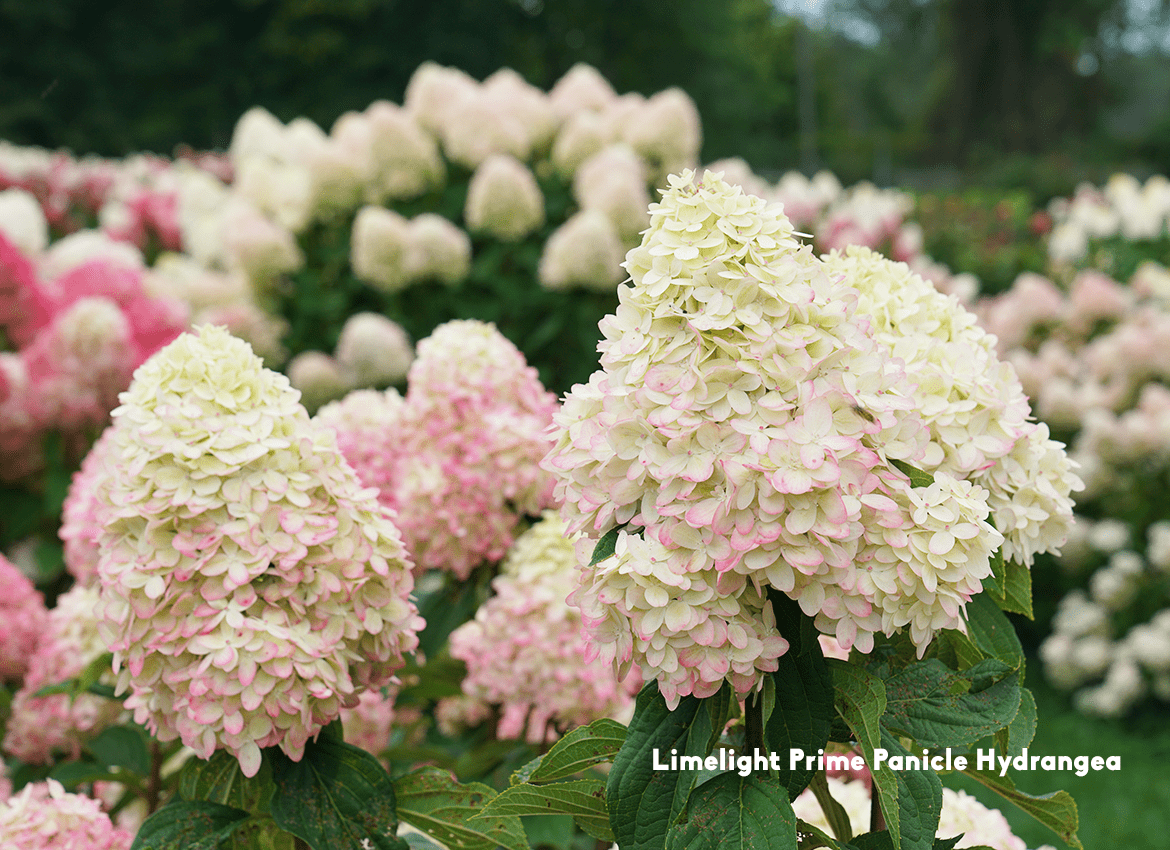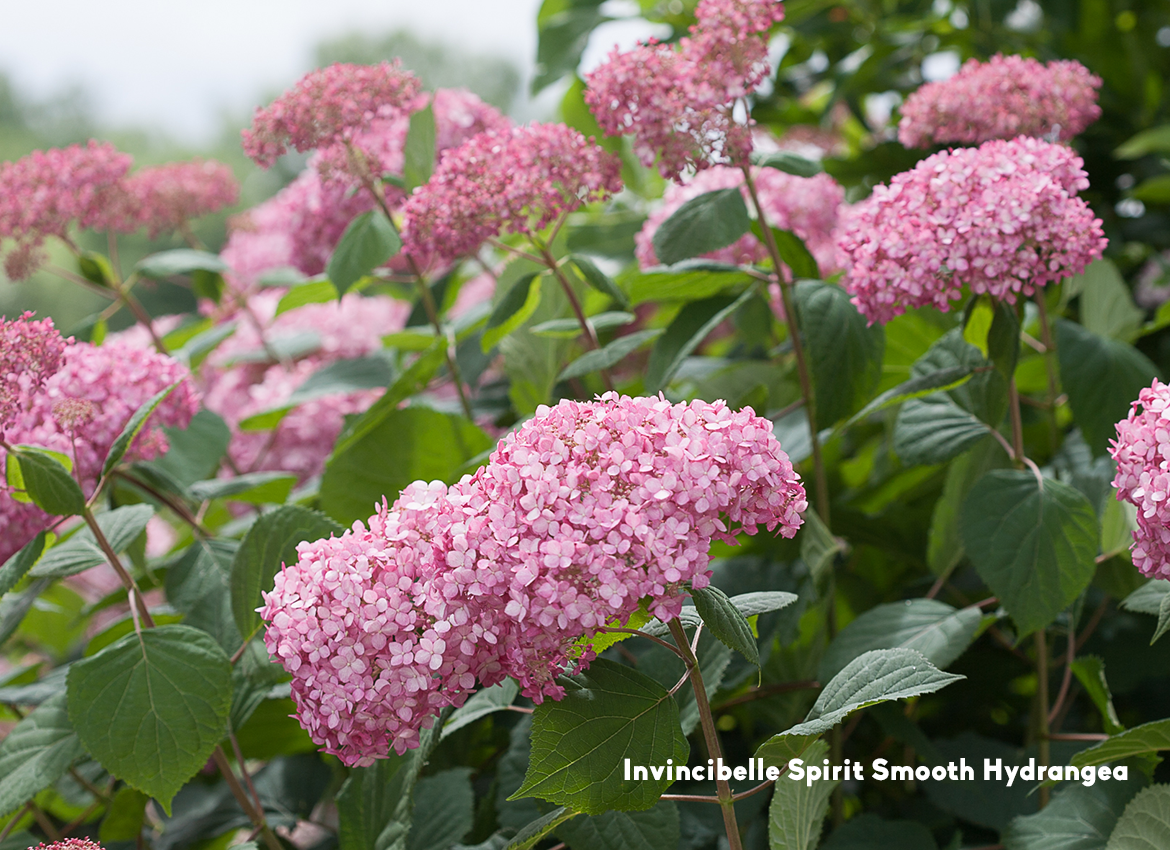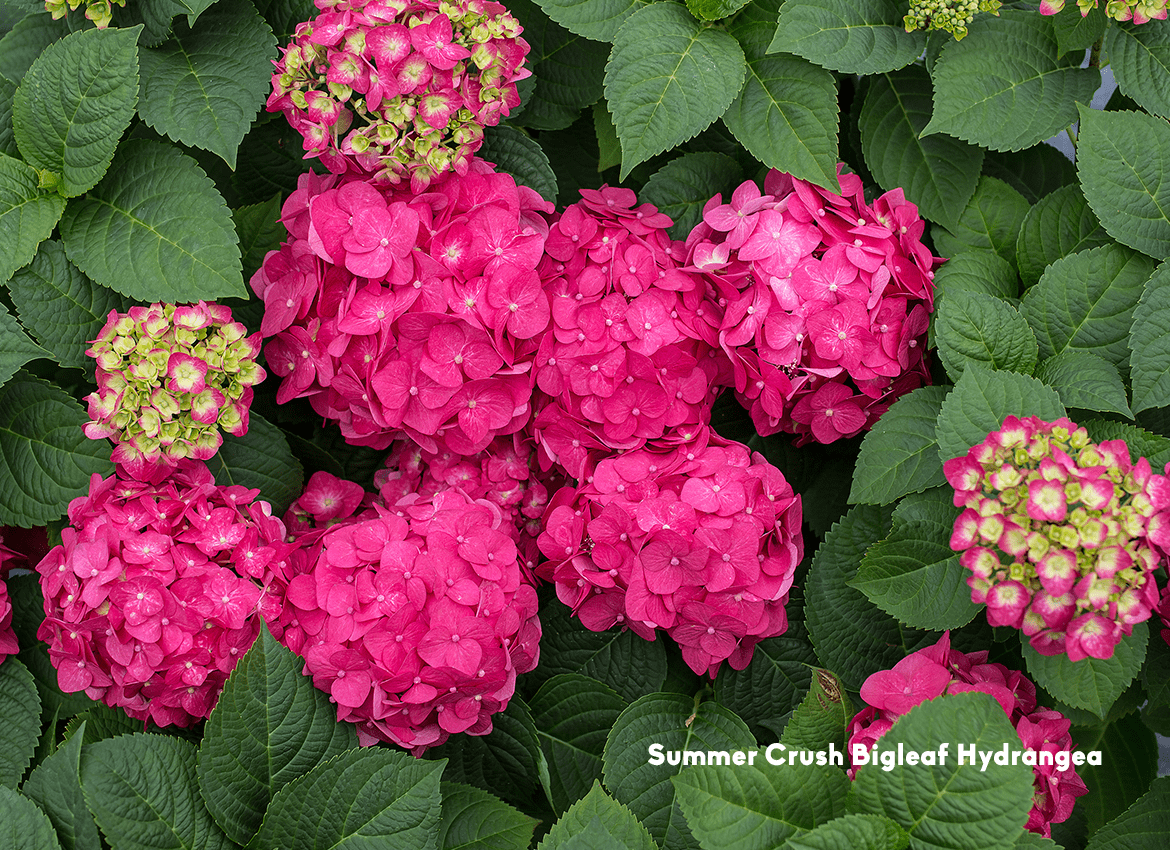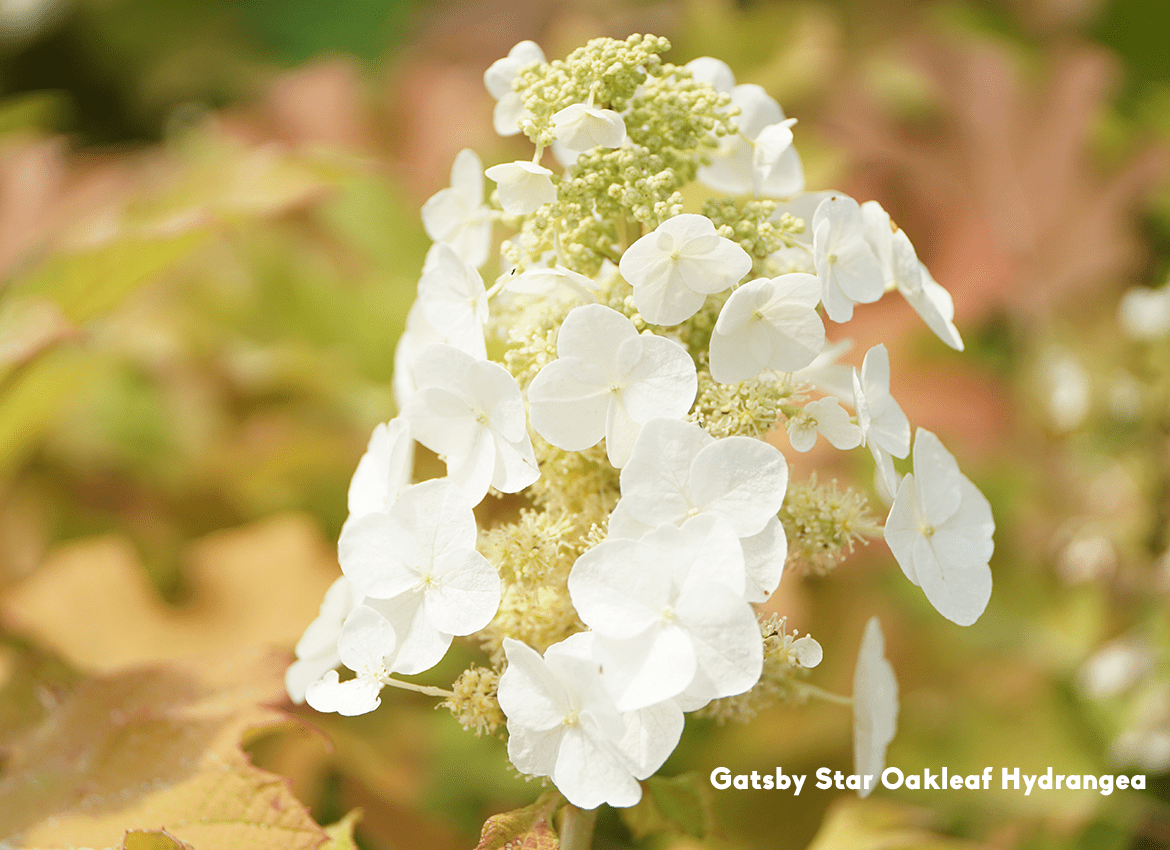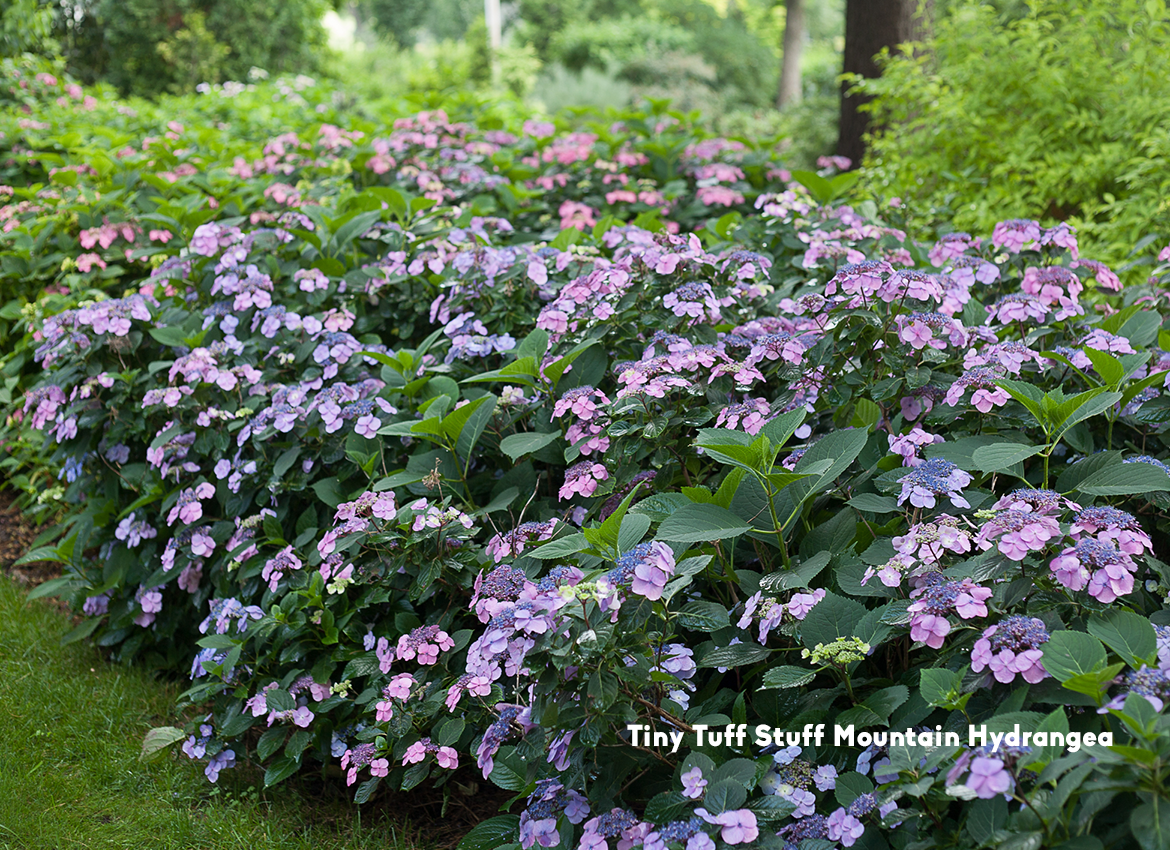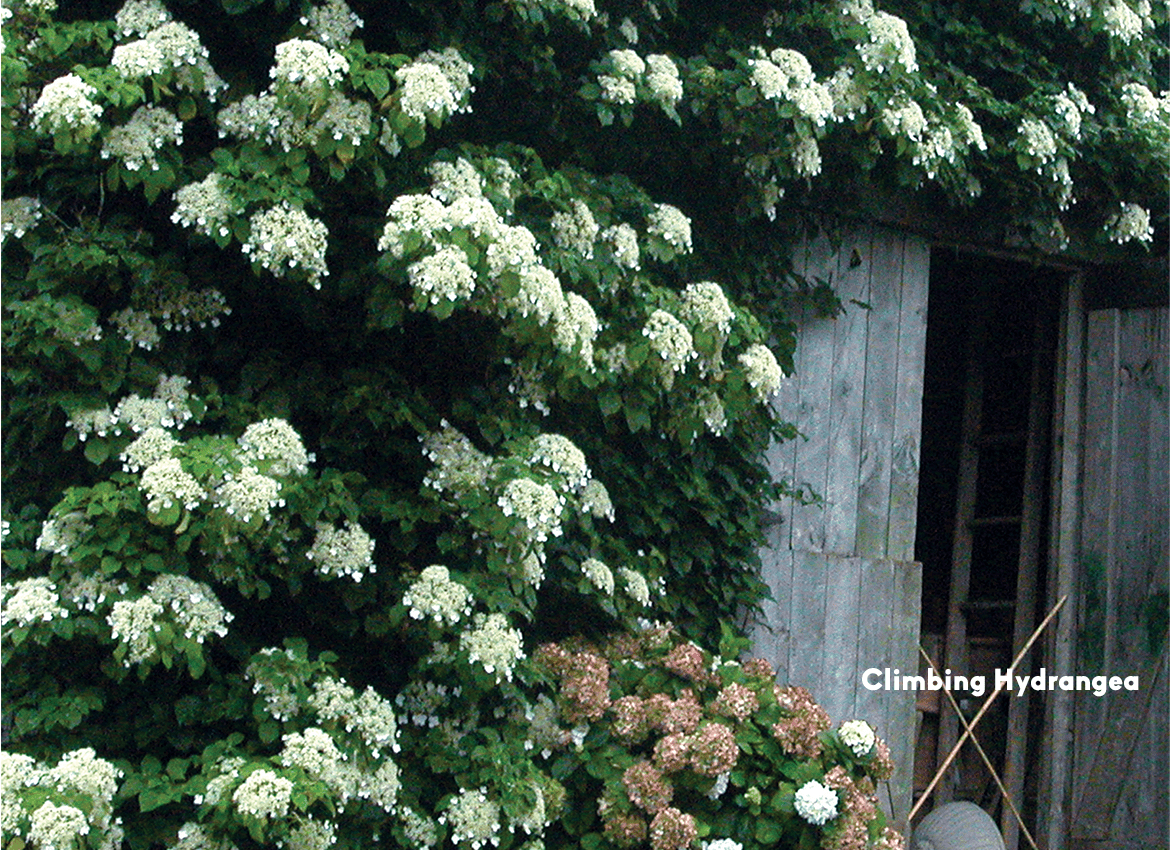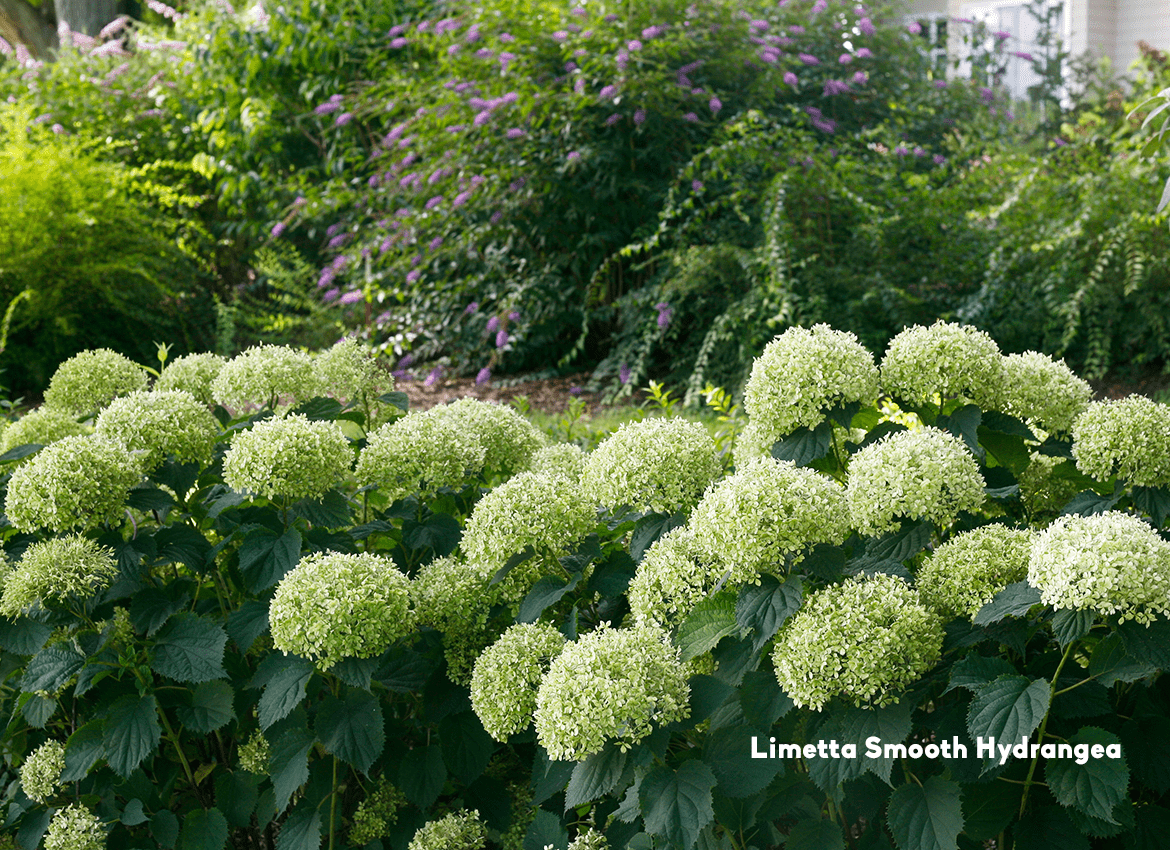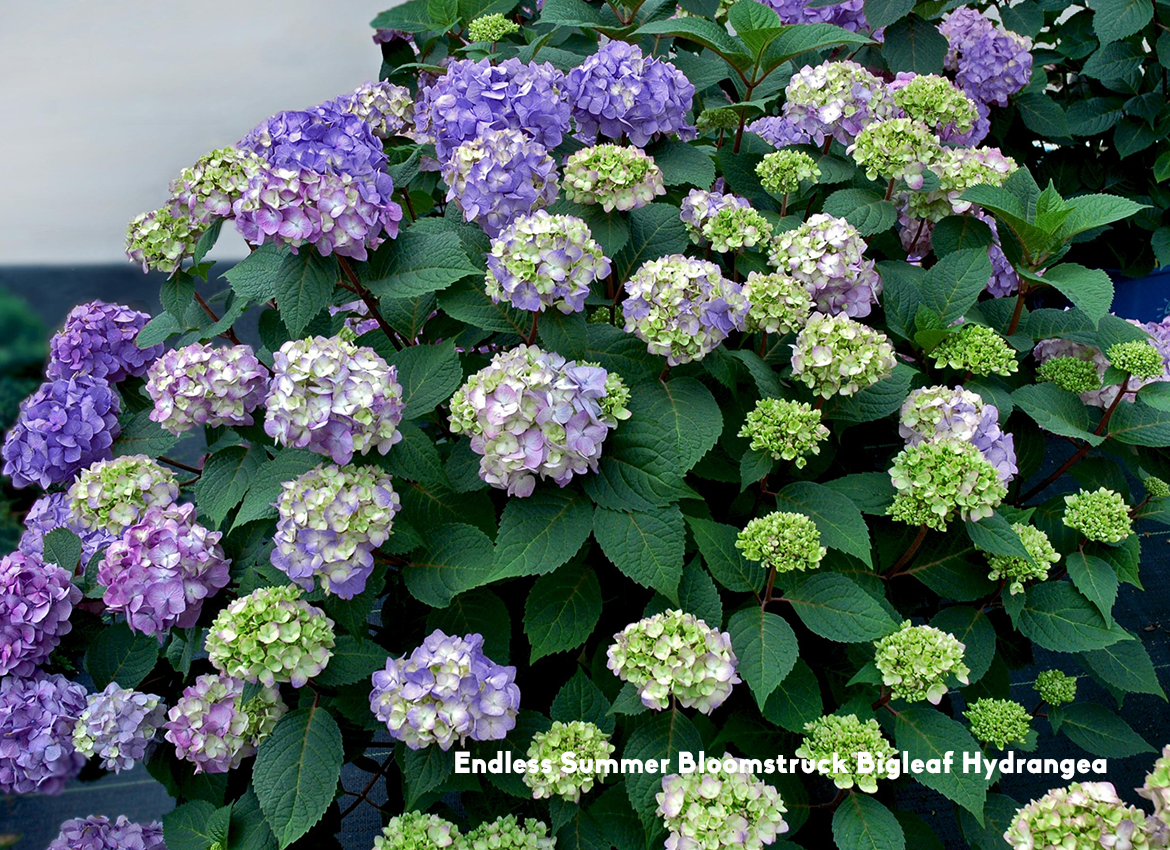Outdoor Plants, Spring, Summer
Gardening with Hydrangeas
July 7, 2022
Hydrangeas are some of the most beloved flowering shrubs. If you’re not already a believer, here are some reasons to add hydrangeas to your garden this summer!
4 REASONS TO CHOOSE A HYDRANGEA!
- Most varieties are easy to care for and do well in full or partially shaded gardens.
- Their beautiful blooms are perfect for fresh or dried centerpieces and bouquets.
- They bloom through summer and into fall. Many turn a different colour as the seasons change.
- They come in a variety of colours, shapes and sizes!
Types of Hydrangeas
Hydrangeas adapt well to Canadian gardens and are available in a shrub, vine, or tree form. There are six common species of hydrangeas and within those two different types — those to prune and those NOT to prune.
THOSE TO PRUNE IN LATE WINTER OR EARLY SPRING
Panicle and Smooth Hydrangeas both bloom on new wood which means they require pruning. When pruning, cut above new buds to allow for the new growth.
PANICLE HYDRANGEAS – HYDRANGEA PANICULATA
- Also known as a Peegee Hydrangea
- A reliable bloomer with cone-shaped flower heads. It blooms white and turns pink.
SMOOTH HYDRANGEAS – HYDRANGEA ARBORESCENS
- Also known as Annabelle hydrangea
- Large blooms. Flowers bloom green and white as they mature.
THOSE TO NOT PRUNE
These species bloom on old wood meaning you do not need to prune the branches. If you have pruned these plants in the fall, you will notice a drastic reduction of blooms on your plants the next spring. Simply deadhead the spent flowers in the late fall or spring instead to allow for new growth.
BIG LEAF HYDRAGEAS – HYDRANGEA MACROPHYIA
- Also known as the florist’s hydrangea, hortensia, mophead or lacecap
- Attractive clusters of long-blooming summer flowers. Showy with large, big blooms.
- May benefit from winter protection.
OAKLEAF HYDRANGEAS – HYDRANGEA QUERCIFOLIOA
- Long-lasting cone-shaped blooms begin as white and transition to a light pinkish hue.
- May benefit from winter protection.
- Leaves change in the fall to orange, red, and then to mahogany. These are the only hydrangeas with colour changing leaves.
MOUNTAIN HYDRANGEAS – HYDRANGEA SERRATA
- Showy, delicate lace-cap flowers with flattened clusters.
- Blooms may change colour during the season.
CLIMBING HYDRANGEAS – HYDRANGEA PETIOLARIS
- Featuring dark green foliage with fragrant clusters of white flowers that bloom in late spring and early summer.
- Slow growing and may take 4 to 5 years to reach flowering maturity.
Caring for Hydrangeas
Hydrangeas are perfect for garden beds as specimen plants and shrub borders. They can also be used in container planting. When first planted, hydrangeas require a little extra attention and watering, but once established, they are very easy plants that do not need constant care.
One of the most important keys to hydrangea success is appropriate watering. ‘Hydra’ comes from the Greek word for water and “angeon” meaning vessel referring to the seed capsules’ resemblance to ancient Greek water-carrying vessels. While they do require plenty of water they don’t like to sit in soggy soil, so keep things moist – but not overly wet.
Here are some basic tips to follow
- Hydrangeas will generally do best in a partial sun setting – ideally with full morning sun – but can also do well in more shaded areas.
- When planting groups of hydrangeas, space them at least 3 to 5 feet apart, allowing for space to grow into mature plants.
- Hydrangeas will thrive in well-drained, fertile soil – hydrangeas will never tolerate wet feet! Adding peat or compost to the soil around your plants will ensure an ideal growing environment and keep your soil nice and moist.
- Established hydrangeas need about an inch of water per week during their prime growing season. When first planted however, deeply watering them a few times a week will help establish their roots.
- Water the base of the plants in the morning to ensure the soil stays moist and cool.
- Most hydrangeas don’t require much fertilizing, but they can benefit from an all-purpose plant food applied in late winter or early spring. Talk to a Sheridan Nurseries plant expert if you are unsure, as too much fertilizer can result in more leaves than blooms. Too much nitrogen also produces long stems that might not set flower buds.
HOW TO MAKE YOUR HYDRANGEAS TURN BLUE OR PINK
Did you know that you can enhance or change the flower colour of certain Hydrangeas?
All hydrangeas undergo some colour change as the flowers age, but Bigleaf and Mountain hydrangeas can change their floral colour based on the Ph of their soil.
Adding garden soil enhancement products to the surrounding soil when planting, or on the top layer of soil around the root zone of existing plants allows you to alter the bloom colour in shades of blue and pink.
- ‘Soil sweeteners’ such as Parkwood Make it PinkTM help grow alkaline-loving plants and can alter the bloom colour to shades of pink.
- ‘Soil Acidifiers’ such as Parkwood Make it BlueTM are for acid-loving plants. Adding this to your soil when planting or to existing plants will increase the blue tone of your blooms.
Understanding the pruning requirements of your hydrangea and a bit of attention to watering will provide years of enjoyment from these big, bold, beautiful blooms in your garden.
Sheridan has one of the largest selections of hydrangeas in the GTA. We are known for our quality plants and expert gardening advice.
SHARE THIS ARTICLE
